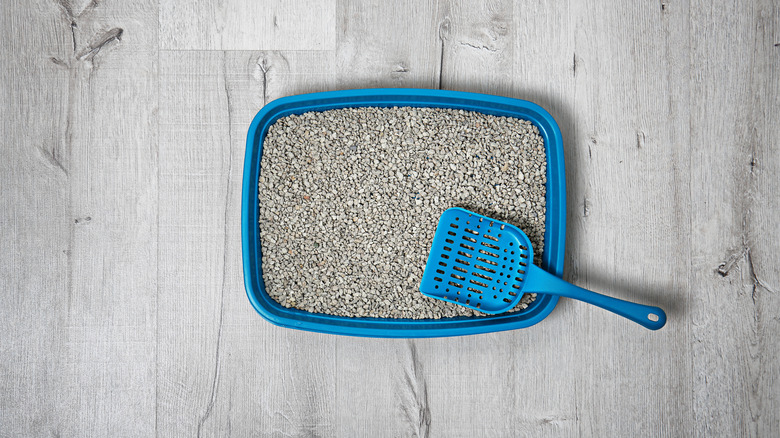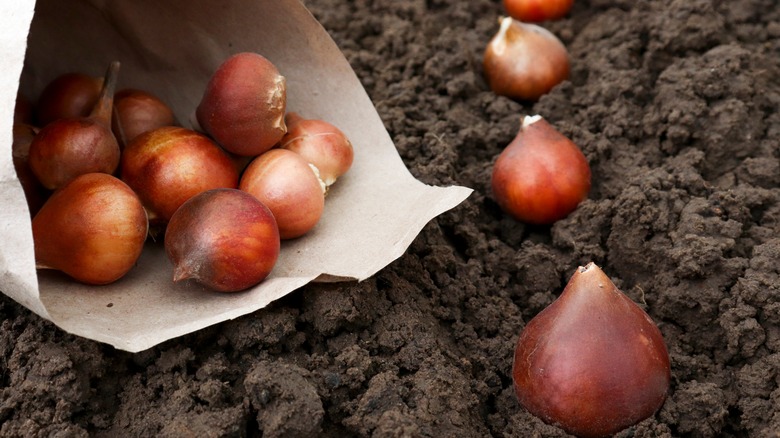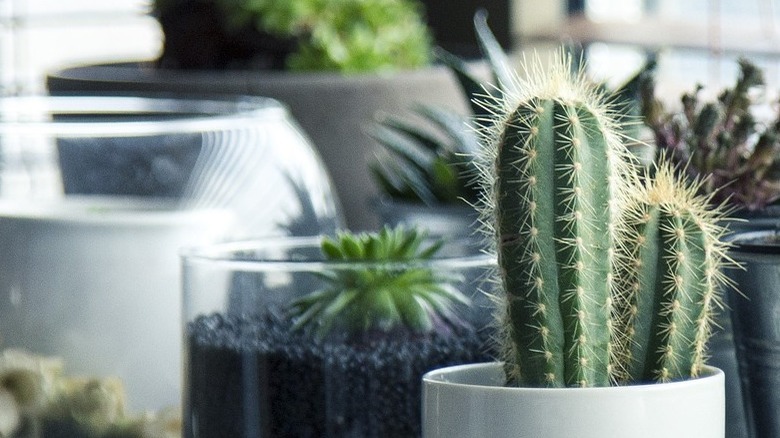How To Use Kitty Litter To Help Your Plants Thrive
If you don't own a cat, it's doubtful that you run to the store every month for a new tub of kitty litter. However, plant parents may be interested to learn that this common household product works wonderfully as a soil additive for some houseplants. When mixed with potting soil, clay-based kitty litter helps retain water so plants do not die while providing ample room for aeration and drainage. For this reason, mixing some in can be an excellent method to prevent root rot for plants that require well-draining soil.
Litter is airy enough to aid in root development for plants because its many air pockets allow for the right balance of oxygen and water to pass through. It's also fast-acting, enabling roots to sit in a moist environment long enough for an adequate amount of moisture to travel to the plant. That being said, it's unlikely to oversaturate roots as long as you're watering your plant properly. However, before trying out this hack, it's important to note that not all kitty litter is safe for soil. For instance, fragranced and chemical-heavy litter can damage or kill your plants — also, never use litter that your cat has used first.
Kitty litter is great for flowering bulbs
When bulb plants like daffodils, lilies, and tulips begin to grow in the spring, they only require water once a week. However, care needs to be taken to maintain a proper water-to-oxygen ratio, or else these plants will die. Lightweight, non-clumping litter can be used to prevent the bulbs from drying out while providing the airy environment they crave.
You'll want to use a dust-free, non-clumping cat litter formula derived from calcined clay for your potting soil mixture. This will help keep the soil compact while allowing room for aeration. Hand-mixing your soil and cat litter together in a large bowl is the most straightforward way to get the task done. This is one important reason why going dust-free is essential — the transfer of the mix from the bowl to the pot will go much more smoothly and will create less of a mess to clean up later. It's recommended to include 25% to 50% litter in the mixture.
Kitty litter is also a useful soil amendment for succulents
Succulents, bonsai, and cacti are sensitive to moisture. Because they are delicate subjects, opting for litter that can perform fast drainage is essential. For these types of plants, calcined clay-based kitty litter is an excellent soil amendment. This type of clay is baked, ensuring it's less absorbent and more difficult to break down. However (as with any succulent soil mix), if you add too much water, you risk the roots becoming waterlogged. When creating your succulent soil mix, half of it should be comprised of well-draining litter. The remainder should use equal parts loam soil and horticultural grit for optimal results.
When working with succulents and other plants that prefer dry environments, it's probably advisable to stay away from sodium bentonite clay brands as these will not allow for effective drainage. You may also choose to opt for a soil mix that includes pumice and sand instead of cat litter, as this will provide a better long-term solution for your plants.


